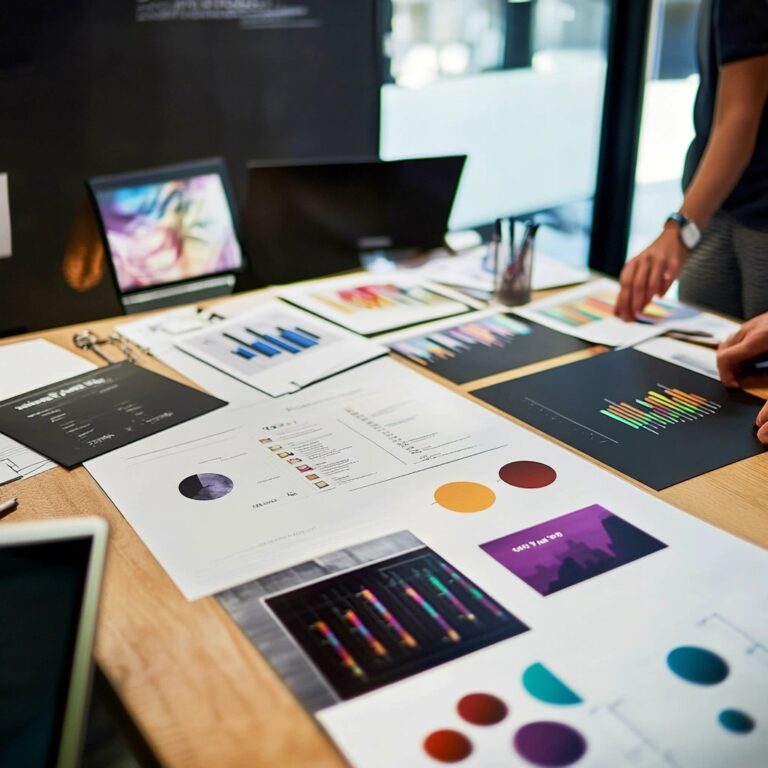How to Optimize Your Influencer Marketing Strategy

Influencers are an integral part of any multi-channel marketing strategy. There’s a reason why Business Insider forecasts influencer marketing to become a $15 Billion market by 2022—with the right campaign, an influencer can leverage their existing audience, create unique content for your brand, and provide a positive ROI.
However, there are also pitfalls to working with influencers: those with millions of followers might demand a high payment, sometimes in return for surprisingly little engagement and traffic with their sponsored posts.
So how do you find influencers who will create value for your brand?
If you’re looking to optimize your influence marketing strategy, this guide will help you find the influencers and design the campaigns that succeed.
Finding Niche Influencers with Hyper-Engaged Audiences
When it comes to an influencer’s following, it’s not always size that matters. Some influencers might have legions of followers, but little engagement. In fact, the more followers an influencer has, the lower their engagement rate is likely to be.
Why aren’t their supposed fans liking their posts, engaging in the comments, or reposting? Perhaps this is a question for another time. Instead, let’s focus on how to find influencers who resonate with your brand and have high engagement rates. When you’re on the lookout for influencers to work with, consider:
- Who is their audience? Is it aligned with your brand’s current audience? Will they be able to introduce your brand to new customers?
- Do their followers actively like, comment, and engage with their content, and with each other?
- Does the influencer actively respond to the comments, even with simple phrases or emoji?
The more engaged an influencer’s followers are with existing content, the more likely they are to see and respond to any sponsored content your brand commissions for their feed.
Detecting “Fake” Influencers
There are disingenuous reasons why some influencers have low engagement rates: they’re not really influencers.
Instead, they’ve bought their following, used “bots” to grow it, or they’re part of an “influencer pod”—a network of influencers that like and comment on each other’s posts to increase engagement rates. These inflate the influencer’s social media currency and leave unsuspecting brands with wasted marketing dollars.
So, how do you tell if an influencer has a healthy, organic following? You might have to get out a calculator:
- Divide the number of likes on each of their most recent posts by their follower count and multiply by 100.*
- For example, if a post received 50 likes to an influencer’s 3,000 followers, it has a 1.6% engagement rate.
- To get a sense of the influencer’s overall engagement rate, try this with 5 recent posts.
According to Influence.co, an average engagement rate for influencers is between 5% and 6%. If a potential partner’s engagement rate is lower than that, they may be a fake influencer, and they likely won’t generate the strongest campaign. You’ll have to keep looking.
*Note: With Instagram’s switch to Hidden Likes, this information is no longer publicly available. When considering an influencer, they should readily provide you their most recent numbers. This also helps with the vetting process (if they’re fake influencers, they’re probably less likely to share this information).
Paying Nano Influencers
When you’re working with smaller influencers, you may be able to compensate them for posts with a free product instead of cash payment. You can also incentivize high-quality and frequent posting with bonuses. If a particular influencer’s work seems to be generating more conversions, you can always reward them or adjust their pay scale.
When you partner with a smaller influencer, you also provide them visibility with reposts to your social media channels.
In this way, a successful partnership is one where you both grow together.
Custom Campaign Agreements
Once you’ve found an influencer to partner with, it’s important to clearly outline and agree upon the terms of the partnership prior to sending a free product or cash payment. You don’t want to send your product just to generate inappropriate, tasteless, or poorly shot ads—or no ads at all.
The clearer your directive, the more you set your influencer partner up for success. Be sure to provide them with all of the following details:
- Campaign Dates
- Partnership Details: Total number of social posts and what type (Instagram, Instagram Stories, IGTV videos, YouTube videos, etc.)
- Key Messaging
- Sponsorship Rates (if any)
- Invoice Instructions (if any)
Be sure not to pay influencers until after the terms of the partnership are complete. This incentivizes timely posting that’s in line with your goals.
Image and Video Copyright Contract
As part of your agreement, you also want to ensure that each influencer signs an Image and Video Copyright Contract prior to partnership.
An Image and Video Copyright Contract ensures that all content the influencer creates during the partnership (regarding your brand), whether it is imagery or video content, is owned by your brand. An extension of your influencer marketing strategy involves reposting the content to several channels:
- Promotional Emails
- Facebook Advertisements
- Social Posts
- Website Content
Their endorsement serves as a testimonial for your brand. It will have a unique look and feel that helps to broaden your audience and generate more views. But without a contract, you won’t be able to use it at all.
Choose the Ad Type: Whitelisted or Influencer-Created
When you’re working with an influencer, you can ask them to generate unique content, or you can have them run a whitelisting ad created by your brand.
Both have their benefits. When influencers create their own ads, they’re responsible for the production costs. However, whitelisting allows you to see a higher ROI on ads you’ve already paid to create.
Let’s take a look at both models.
Influencer Imagery
The authentic, lifestyle imagery generated from influencers is a huge asset to any brand. Instead of paying for a professional photoshoot (which can cost upwards of $10K alone), you allow the influencer’s knowledge of their audience to curate the perfect “natural” photo.
From there, you can repurpose and leverage the advertising assets created by each influencer across all marketing channels for a unique brand look.
Influencer Whitelisting Ads
A whitelisting ad is an ad that’s created by the brand and runs through an influencer’s Instagram. Our team experimented with this model and split-test two ads with the same image and copy. The whitelisting ad significantly outperformed the branded ad with up to 70% higher ROAS (return on ad spend).
Why did it outperform the brand’s ad? Two reasons:
- Influencers act as word-of-mouth marketing. Because their audience views them as real, genuine people, the audience is more willing to trust the influencer’s opinion (compared to a brand that’s trying to sell a product through an ad).
- An influencer also has access to a demographic beyond the brand’s typical audience. This has the potential for new leads and improved ROI.
Make Use of Instagram Stories
As you set up your influencer campaign, consider asking influencers to use Instagram Stories. Stories receive more impressions than static Instagram Posts because users are more likely to click through Instagram Stories than they are to scroll to the bottom of their Instagram Feed.
Although they disappear after 24 hours, Instagram Stories allow the influencer to shoot video content, which in turn allows them to tell more of a story and highlight the brand or its products in their own voice. They can also generate engagement through features like “Ask a Question.”
This is where their knowledge of the audience greatly benefits the brand.
Highlight a “Call-to-Action” Message
Make sure to give your influencer guidance when it comes to calls to action. Ask them to highlight a CTA statement at the end of their video or within their caption, incentivizing users to take actionable steps to learn more about the brand or check out the product. Ask them to:
- Encourage their audience to shop directly for your product online (via the website, Amazon, etc.)
- Encourage their audience to shop in-store by recommending brick and mortars where the product is available
- Include a discount or sale prices for a limited time offer (this creates a sense of urgency)
- Post a link to your site in their bio, or if they have a large following, directly in their stories
Custom UTM Tracking
When you’re working with an influencer with over 10K followers, they may have their Instagram set up as a business profile. If this is the case, they are able to include a link within Instagram Stories using the “Swipe Up” feature.
By creating custom UTM tracking links for each influencer, you are able to measure:
- How many users clicked the link
- How many people visited your website
- How many visitors were first-time visitors
- How long users stayed on the website
- If they completed a transaction, and if so, how much revenue it drove
This allows you to see an influencer’s impact beyond brand awareness. What’s more, when an influencer drives new users to your website, you can then retarget them with a paid advertisement.
Putting it All Together
As you begin to work with more influencers using UTM tracking and other tools, you can begin to evaluate the success of your strategies. From there, you can optimize:
- Do you see a greater ROI on whitelisting ads or on influencer content?
- On influencers with medium-sized followings, or micro-influencers with a committed audience?
- Which platforms should you focus your attention on?
The more information you have about the success of past ads, the clearer you can be in your directives to influencer partners. And as your brand grows, so too will your reach and budget when it comes to working with top talent.
Need help measuring and optimizing the effectiveness of your influencer ads? Let PDM be your guide. Our Influencer Marketing services take the work out of connecting with and coaching influencers to be successful advocates for your brand.
Sources:
- Influence. Instagram Influencer Rates. http://blog.influence.co/instagram-influencer-rates/
- Business Insider. Influencer Marketing Report. https://www.businessinsider.com/influencer-marketing-report
- Forbes. Social Media Roundup: Instagram Hidden Likes Count Test, Facebook AI Assistant Coming, Pinterest IPO. https://www.forbes.com/sites/amitchowdhry/2019/04/21/social-media-roundup-instagram-hidden-likes-count-test-facebook-ai-assistant-coming-pinterest-ipo/#1b41184f67a5
Our Editorial Standards
Reviewed for Accuracy
Every piece is fact-checked for precision.
Up-to-Date Research
We reflect the latest trends and insights.
Credible References
Backed by trusted industry sources.
Actionable & Insight-Driven
Strategic takeaways for real results.






